Dam Destruction Threatens Ukraine’s Largest Nuclear Plant
By RFE/RL staff - Jun 06, 2023
- Russia has been accused of blowing up a large Soviet-era dam on the Dnieper River, leading to mass evacuation in Ukraine due to rapid flooding.
- The attack potentially threatens Europe's largest nuclear plant, the Zaporizhzhya plant, which uses water from the reservoir created by the dam for cooling purposes, leading to an emergency meeting of Ukraine's National Security and Defense Council.
- International condemnation of the attack is swift, with NATO and European Council officials calling it an 'outrageous act' and 'war crime,' respectively, and Ukraine seeking a UN Security Council meeting to discuss what it labels a 'Russian terrorist attack.'
Ukraine has accused Russia of blowing up a huge Soviet-era dam on the Dnieper River in a Moscow-occupied area in the south, sending millions of liters of water cascading through the region in what President Volodymyr Zelenskiy called an act of "terror."
Ukrainian authorities said tens of thousands of people were being evacuated from areas threatened by massive flooding downstream in the Kherson region after the attack in the early hours of June 6. Within hours, water levels had already risen by 10 to 12 meters, they added.
The mayor of Nova Kakhovka, Volodymyr Kovalenko, told News of Azov, a project of RFE/RL's Ukrainian Service, that the the lower part of the river's bank had already flooded the Kazkova Dibrova zoo, a summer cinema, a park area, and stadiums, while architecturally significant buildings were threatened by the rising water that is likely to remain for several days before receding.
"The Kakhovska [dam project] has actually been destroyed, it's hard for me to imagine whether it will be possible to do something with it once the war has ended. The destruction is of such a scale that a lot of water will come out and there will be flooding, especially in the old part of the city," Kovalenko said.
With the Zaporizhzhya nuclear plant also in possible peril, Zelenskiy called an emergency meeting of the country's National Security and Defense Council to discuss the situation.
"Russian terrorists," Zelenskiy wrote on Twitter, where he posted a video of the broken dam and the water rapidly flowing through the huge breach.
"The destruction of the [Nova] Kakhovka hydroelectric power plant dam only confirms for the whole world that they must be expelled from every corner of Ukrainian land. Not a single meter should be left to them, because they use every meter for terror.... The terrorists will not be able to stop Ukraine with water, missiles or anything else," Zelenskiy wrote, adding that all services were working.
Russia denied it carried out the attack, with the Kremlin instead calling it "deliberate sabotage" by Kyiv.
Natalya Humenyuk, the spokeswoman for Ukraine's southern military command, said Russia blew up the dam to keep Ukrainian troops from being able to cross the Dnieper as it prepares to go on the counteroffensive to push Russian troops out of the region."They were aware that the movement of the (Ukrainian) defense forces would take place and in this way tried to influence the defense forces so that the crossing of the Dnieper, which they feared, would not happen." she told an online briefing, calling it a "hysterical reaction."While the International Atomic Energy Agency (IAEA) said it was monitoring the situation, Ukraine's nuclear energy agency warned that the destruction of the Nova Kakhovka dam could pose a danger for the safety of the Zaporizhzhya plant -- Europe's biggest nuclear plant -- which uses water from the reservoir for the cooling process."Water from the Kakhovka reservoir is necessary for the station to receive power for turbine capacitors and safety systems. Now the station's cooling pond is full: as of 8 a.m., the water level is 16.6 meters high, which is enough for the station's needs," Enerhoatom, the plant's operator, said, adding later that the situation was "not critical."
The IAEA said the plant should have enough water to cool its reactors for "some months" from a pond located above the reservoir created by the dam."It is therefore vital that this cooling pond remains intact. Nothing must be done to potentially undermine its integrity. I call on all sides to ensure nothing is done to undermine that," IAEA chief Rafael Grossi said in a statement.
The Nova Kakhovka dam -- which is 30 meters tall and 3.2 kilometers long -- is part a vital route for transport and irrigation, as well as supplying water to Ukraine's Crimean Peninsula as well as the Zaporizhzhya plant, which are both under Russian control.International condemnation of the attack was swift, with NATO chief Jens Stoltenberg calling it "an outrageous act," while European Council President Charles Michel expressed “shock” saying Russia should be held accountable for the "war crime" of destroying civilian infrastructure."The destruction of the Kakhovka dam today puts thousands of civilians at risk and causes severe environmental damage. This is an outrageous act, which demonstrates once again the brutality of Russia's war in Ukraine," Stoltenberg wrote on Twitter.British Foreign Secretary James Cleverly also put the blame squarely on Moscow for the destruction of the dam, saying that while it was "too early" to make any kind of meaningful assessment of the details, "it's worth remembering that the only reason this is an issue at all is because of Russia's unprovoked full-scale invasion of Ukraine."
Ukraine has called for an urgent meeting of the United Nations Security Council to discuss what it called a "Russian terrorist attack" on the Kakhovka dam. It also said it wanted the IAEA's board of governors to discuss the incident and demanded new international sanctions on Russia, and in particular on the Russian missile industry and nuclear sector.
Officials continue to scramble to move residents out of the area, with Oleksandr Prokudin, the governor of the Kherson region, saying water levels will reach a "critical level" in the early afternoon.
"I specifically appeal to the residents on the left bank [of the Dnieper]: do everything possible to protect yourself and save your life -- immediately leave the dangerous areas," Prokudin said earlier on Telegram.
"As of 7:30 a.m., the following settlements are completely or partially flooded: Tyahynka, Lviv, Odradokamyanka, Ivanivka, Mykilske Tokarivka, Ponyativka, Bilozerka, and the Ostriv microdistrict of the city of Kherson. Other settlements will be flooded, we're prepared," he told national television.
The evacuation of approximately 16,000 people from the threatened area on the right bank of the Dnieper was already under way, Prokudin added.
Andriy Yermak, the head of Ukraine's presidential administration, accused Russia of "ecocide" in a message on Telegram."Another war crime by Russian terrorists. The president convenes the National Security Council. This is ecocide," Yermak wrote.
Presidential adviser Mykhaylo Podolyak accused Russia of committing a "premeditated crime" in an attempt to delay any chance of ending the conflict."The purpose is obvious: to create insurmountable obstacles on the way of the advancing [Ukrainian forces]; to intercept the information initiative; to slow down the fair end of the war. On a vast territory, all life will be destroyed; many settlements will be ruined; colossal damage will be done to the environment," Podolyak wrote on Twitter.
Officials in Russian-occupied parts of Kherson rejected the accusation, blaming the damage on Ukrainian strikes in the contested area.The Moscow-installed mayor of Nova Kakhovka, Vladimir Leontyev, said Ukrainian strikes on the dam destroyed its valves, and "water from the Kakhovka reservoir began to uncontrollably flow downstream."
By RFE/RL
Ukraine And Russia Trade Accusations Over Huge Hydropower Dam Blow-Up
By Tsvetana Paraskova - Jun 06, 2023,

Ukraine and Russia on Tuesday blamed each other for blowing up a hydroelectric dam in Ukraine’s Kherson region, currently under Russian occupation, which prompted evacuation after flooding followed the collapse of the dam.
The collapse of the dam in Nova Kakhovka could affect the Zaporizhzhya nuclear power plant, Europe’s largest.
Energoatom, the Ukrainian nuclear operator, said in a Telegram post, “On the night of June 6, 2023, the Russian occupationists blew up the Kakhovka dam.”
“Water from the Kakhovka reservoir is needed for the plant to receive power for ZNPP turbine capacitors and safety systems,” Energoatom said, adding that the Kakhovka dam collapse “may have negative consequences for ZNPP but the situation is under control.”
The International Atomic Energy Agency (IAEA) said on Tuesday that “the Nova Kakhovka dam was severely damaged leading to a significant reduction in the level of the reservoir used to supply cooling water to the ZNPP.”
But the agency’s Director General Rafael Mariano Grossi said, “Our current assessment is that there is no immediate risk to the safety of the plant.”
Ukrainian President Volodymyr Zelenskyy said that “Russia has been controlling the dam and the entire Kakhovka HPP for more than a year. It is physically impossible to blow it up somehow from the outside, by shelling. It was mined by the Russian occupiers. And they blew it up.”
“This is the largest man-made environmental disaster in Europe in decades,” he added on Twitter.
The Kremlin blamed Ukraine for the sabotage, with spokesman Dmitry Peskov saying, “We can state unequivocally that we are talking about deliberate sabotage by the Ukrainian side.”
“The Kyiv regime should bear full responsibility for all the consequences,” Peskov said, adding that Ukraine aims to cut off Crimea – controlled by Russia – from fresh water, and to distract from its “faltering” counter-offensive.
By Tsvetana Paraskova for Oilprice.com
IAEA: 'No immediate risk' to Zaporizhzhia from dam damage
06 June 2023
The International Atomic Energy Agency (IAEA) says the impact of the damage to the dam on cooling water supplies to the Zaporizhzhia nuclear power plant is being monitored but alternative sources of water on-site should provide sufficient water for cooling "for some months" and means "our current assessment is that there is no immediate risk to the safety of the plant".
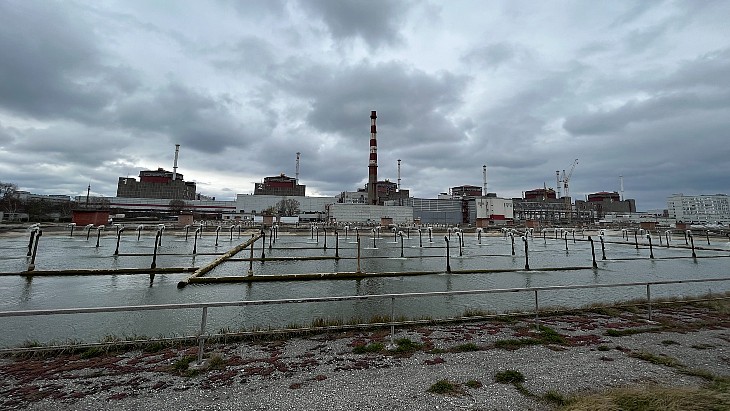 Water is essential for cooling functions. This picture was taken in March during an IAEA visit to the plant (Image: IAEA)
Water is essential for cooling functions. This picture was taken in March during an IAEA visit to the plant (Image: IAEA)In an update to the IAEA board of governors on Tuesday morning, Director General Rafael Mariano Grossi said the damage to the Nova Kakhovka dam - which Ukraine says was caused by the Russian shelling, and Russia blames on Ukraine - had led to a "significant reduction in the level of the reservoir used to supply cooling water" to Zaporizhzhia nuclear power plant.
The cooling water system at the plant is used for residual heat removal from the reactors (used or partially used fuel there), residual heat removal from the used fuel ponds and cooling of emergency diesel generators if and when they are running.
"Absence of cooling water in the essential cooling water systems for an extended period of time would cause fuel melt and inoperability of the emergency diesel generators," Grossi said.
IAEA staff at the plant have been told that at the moment there is a 5cm per hour reduction in the height of the reservoir, "the main line of cooling water is fed from the reservoir and pumped up through channels near the thermal power plant to the site. It is estimated that the water through this route should last for a few days".
The water level in the reservoir was about 16.4 metres at 08:00 local time - with the IAEA saying that if the level drops below 12.7 metres it can no longer be pumped. The damaged dam itself is about 140km downstream of the nuclear power plant.
There are also alternative sources of water, Grossi said: "A main one is the large cooling pond next to the site that by design is kept above the height of the reservoir. As the reactors have been shut down for many months it is estimated that this pond will be sufficient to provide water for cooling for some months. The agency will confirm this very shortly. It is therefore vital that this cooling pond remains intact. Nothing must be done to potentially undermine its integrity.
"I call on all sides to ensure nothing is done to undermine that."
The IAEA team at the site say that the nuclear power plant is "making all efforts to pump as much water into its cooling channels and related systems as possible" and non-essential consumption of water stopped.
He said that he already planned to visit the Zaporizhzhia nuclear power plant next week "and now it is essential. I will go".
The damage to the dam, which is in a Russian-controlled region, has led to severe flooding and mass evacuations. According to the Russian Tass news agency as of 09:30 GMT on Tuesday, "14 settlements with a population of 22,000 people have come within the flooding area ... and a total of about 80 villages may be inundated". According to Ukrinform, at 14:00 local time (12:00 GMT) the water level in the reservoir had dropped by 1.5 metres.
The Zaporizhzhia nuclear power plant is the largest in Ukraine, and Europe, with six reactors. It has been under Russian military control since early March 2022. Five of its six reactors are in cold shutdown and one in warm shutdown - which allows it to provide heat for the plant and the nearby city of Energodar. As it is upstream of the reservoir it is not in the areas at risk of flooding.
A failure of the Nova Kakhovka dam caused by an earthquake was a scenario examined in post-Fukushima Daiichi safety checks of the Zaporizhzhia plant, in particular the possibility of water loss in the cooling pond, and concluded that "owing to the significant width of the cooling pond levee ... water losses because of filtering will remain actually unchanged in comparison with the design-basis conditions".
Sama Bilbao y León, director general of World Nuclear Association, welcomed the fact the nuclear power plant "remains in a safe, stable situation" despite the damage to the dam, adding: "The analysis and planning done in preparing the plant’s safety case, including revisions carried out as part of the plant’s stress tests, have ensured the plant is both robust and prepared to handle challenges, such as those resulting from the rupture of the Kakhovka hydroelectric dam.
"I condemn outright the deliberate attack on the dam. Beyond the disruption to operations at Zaporizhzhia, the attack has caused a threat to life for the thousands of residents downstream of the dam, as well as the destruction of property and farmland, and environmental damage."
IAEA aims to expand team at Zaporizhzhia
05 June 2023
International Atomic Energy Agency (IAEA) Director General Rafael Mariano Grossi has said he hopes to "reinforce" the agency's team of experts at the Zaporizhzhia nuclear power plant to reflect its expanded role which includes monitoring compliance with the five safety and security principles outlined at the United Nations last week.
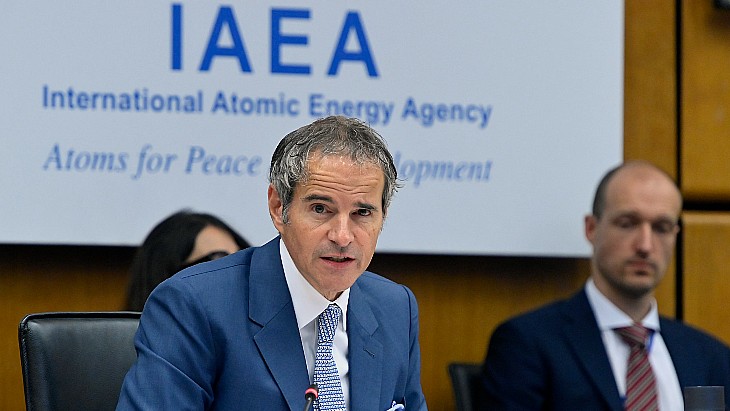 (Photo: D. Calma/IAEA)
(Photo: D. Calma/IAEA)
In his statement to the IAEA board of governors, Grossi said he had "respectfully and solemnly asked both sides to observe" the five principles - which include agreement not to fire from, or at, the nuclear power plant, or to use it as a base for military personnel or equipment that could be used for an attack.
He said: "They are to no-one’s detriment and to everyone's benefit ... the IAEA Support and Assistance Mission to Zaporizhzhya (ISAMZ), will report to me, in my capacity as director general, on the observance of these principles, and I will report publicly on any violations of them."
At a news conference following his statement to the board, Grossi was asked when the team at the Zaporizhzhia plant was to be expanded. He said the precise timing was not the key thing, as the "wider mission" was now already in place but his aim was to reinforce the team, and enlarge it, perhaps at the next rotation of staff.
Zaporizhzhia is the largest nuclear power plant in Ukraine, and Europe, and is on the frontline of Russian and Ukrainian forces. The wider site has been damaged by shelling at times over the past 16 months of war and it has also had to rely on emergency diesel generators on seven occasions when it has lost its external power supply.
Grossi said: "The site’s fragile power situation continues to be a source of deep concern and - as the newly-established IAEA principles indicate - there is a need for intensified efforts to ensure a more stable and predictable external electricity supply."
The plant currently relies on one 750 kilovolt power line for the external electricity it needs for reactor cooling and other essential nuclear safety and security functions, compared with the four off-site power lines available before the conflict.
The nearby Zaporizhzhia Thermal Power Plant operates the 330 kV open switchyard, through which back-up power has been supplied in the past and Russia told the IAEA in March that Rosatom was working to remove damaged equipment from the open switchyard, "with the aim of restoring three 330 kV lines to the grid system in currently Russian-controlled territory" but, the IAEA said, its experts have still not been granted access to assess the situation and "consultations are ongoing to secure the access".
In his broader update to the IAEA board of governors, Grossi said EUR5 million (USD5.35 million) of nuclear safety and security equipment had been delivered to Ukraine and so far 81 of its experts in 37 missions had been part of one of the rotations at the country's five nuclear sites.
On safeguards to avoid nuclear proliferation, he said that the AUKUS plan - involving the USA and UK - for Australia to get nuclear-powered submarines was "of considerable interest and, for some, concern" and he said the "Secretariat has engaged in consultations with the states concerned to consider the possible implications on the application of agency safeguards. Such arrangements must be in strict conformity with the existing legal framework and, once they are finalised, will be transmitted to the Board of Governors for appropriate action. This process will take some time and the agency will undertake it with its technical, impartial and objective approach."
On Iran, in response to questions from reporters, Grossi rejected the suggestion that safeguards had been "watered down" and insisted that the IAEA was "firm but fair". On North Korea, he said: "The reopening of the nuclear test site is deeply troubling. The conduct of a nuclear test would contravene UN Security Council resolutions and would be a cause for serious concern."
He said that his recent, first official, trip to China had led to the establishment in Beijing of the Nuclear and Radiation Safety Centre. "The centre will be a place for Member States to cooperate and share knowledge on fundamental topics such as ensuring radiation safety, transporting nuclear waste and promoting capacity-building. This visit was of fundamental importance as we enhance our bilateral work in the context of China’s fast-growing civil nuclear programme," he said.
Meanwhile, he said, the Rays of Hope cancer initiative "is gaining momentum" raising approximately EUR37 million in the past year, but there were still funding gaps that need to be filled with 60 member states identifying additional estimated priority needs of EUR36 million.
Researched and written by World Nuclear News

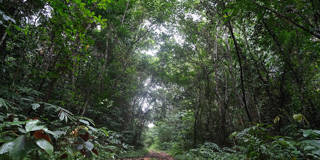




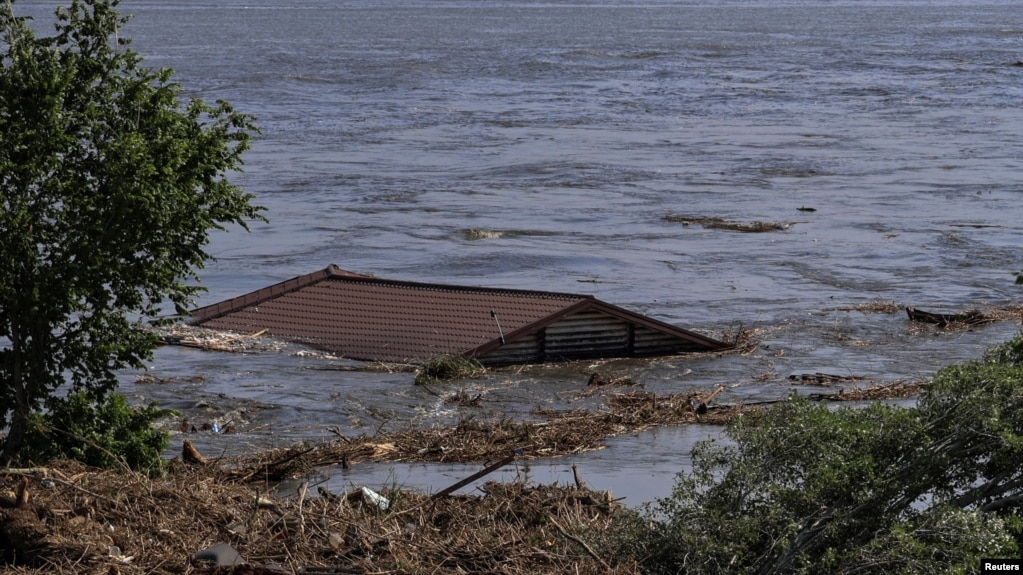


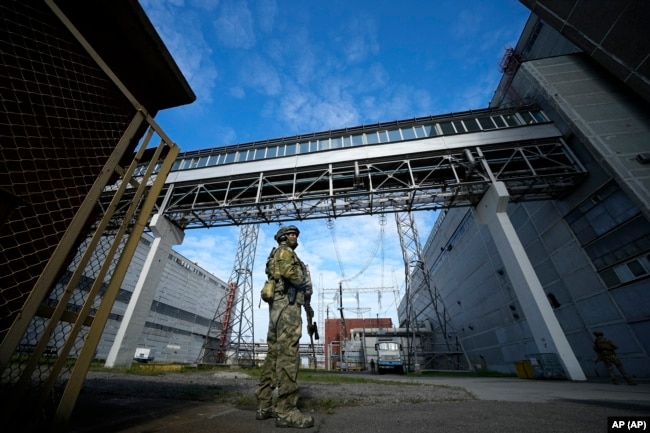
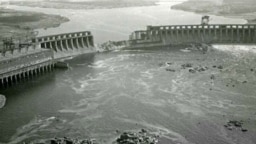

 Water is essential for cooling functions. This picture was taken in March during an IAEA visit to the plant (Image: IAEA)
Water is essential for cooling functions. This picture was taken in March during an IAEA visit to the plant (Image: IAEA) (Photo: D. Calma/IAEA)
(Photo: D. Calma/IAEA)